This pub partly occupies the site of the long-standing public baths, designed by Cuthbert Brodrick. The baths stood facing Leeds Institute, another of Brodrick’s designs. Brodrick also designed Leeds town hall, a stone’s throw from this site.
A framed photograph and text about William Congreve and Leeds.
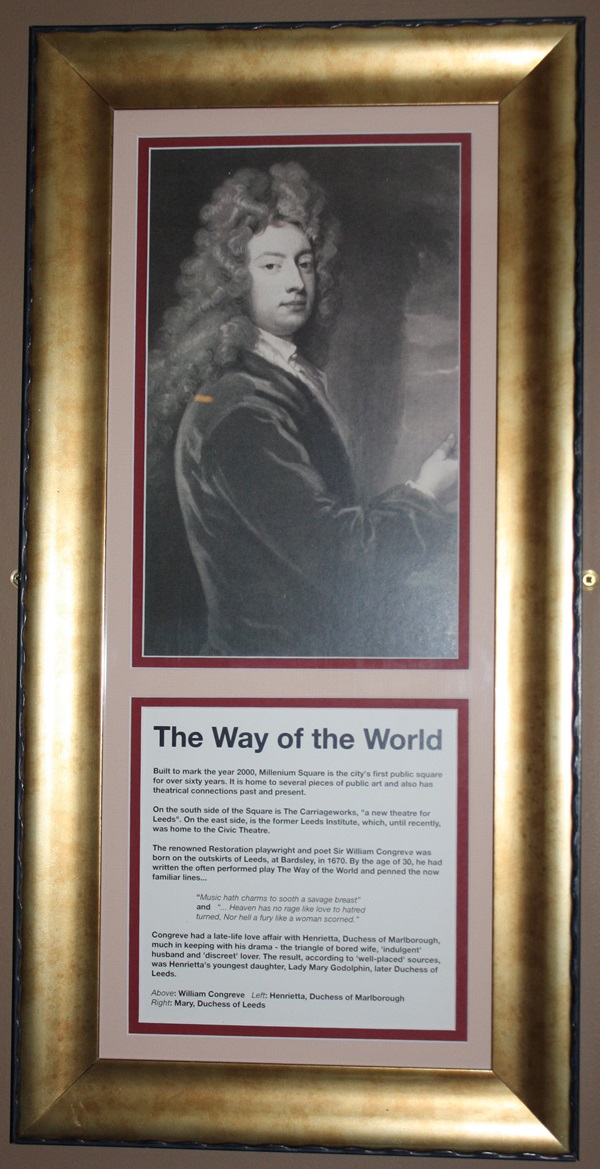
The text reads: Built to mark the year 2000, Millennium Square is the city’s first public square for over sixty years. It is home to several pieces of public art and also has theatrical connections past and present.
On the south side of the Square is The Carriageworks, “a new theatre for Leeds”. On the east side, is the former Leeds Institute, which, until recently, was home to the Civic Theatre.
The renowned Restoration playwright and poet Sir William Congreve was born on the outskirts of Leeds, at Bardsley, in 1670. By the age of 30, he had written the often performed play The Way of the World and penned the now familiar lines…
“Music hath charms to sooth a savage breast” and “…Heaven has no rage like love to hatred turned, nor hell a fury like a woman scorned”.
Congreve had a late-life love affair with Henrietta, Duchess of Marlborough, much in keeping with his drama – the triangle or bored wife, ‘indulgent’ husband and discreet lover. The result, according to ‘well-placed’ sources, was Henrietta’s youngest daughter, Lady Mary Godolphin, later Duchess of Leeds.
Above: William Congreve
Left: Henrietta, Duchess of Marlborough
Right: Mary Duchess of Leeds
A framed text about Leeds’ symbol – the owl.
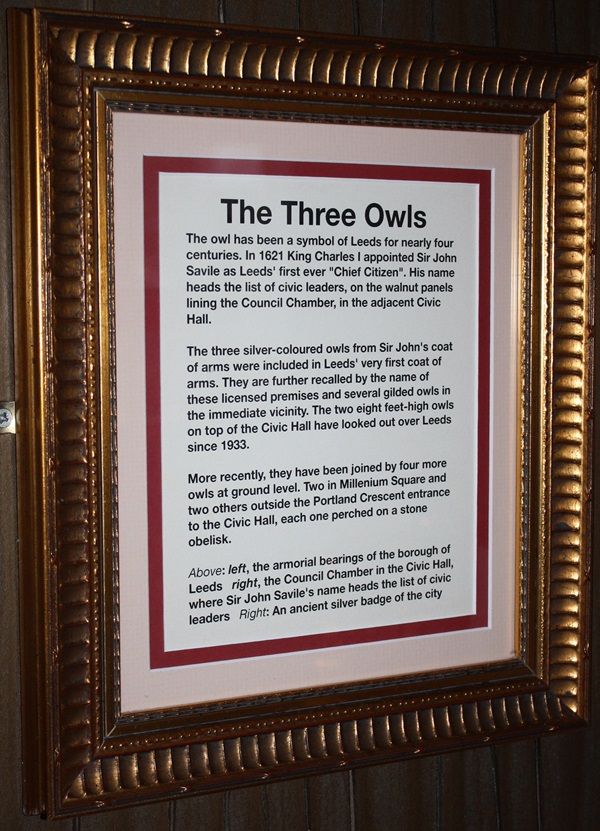
The text reads: The owl has been a symbol of Leeds for nearly four centuries. In 1621 King Charles I appointed Sir John Savile as Leeds’ first ever “Chief Citizen”. His name heads the list of civic leaders, on the walnut panels lining the Council Chamber, in the adjacent Civic Hall.
The tree silver-coloured owls from Sir John’s coat of arms were included in Leeds’ very first coat of arms. They are further recalled by the name of these licensed premises and several gilded owls in the immediate vicinity. The two eight feet-high owls on top of the Civic hall have looked out over Leeds since 1933.
More recently, they have been joined by four more owls at ground level. Two in Millennium Square and two others outside the Portland Crescent entrance to the Civic Hall, each one perched on a stone obelisk.
A framed drawing and photograph about the owls.
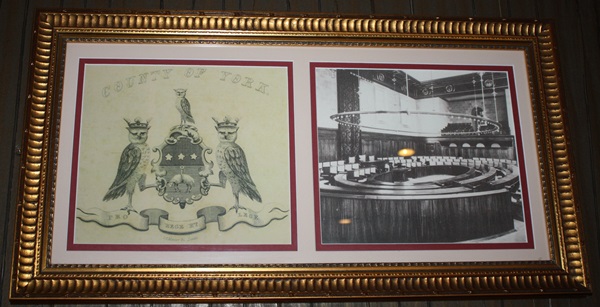
Above: left, the armorial bearings of the borough of Leeds, right, the Council Chamber in the Civic Hall, where Sir John Savile’s name heads the list of civic leaders
Right: An ancient silver badge of the city
A framed photograph and text about Henry Moore and Barbara Hepworth.
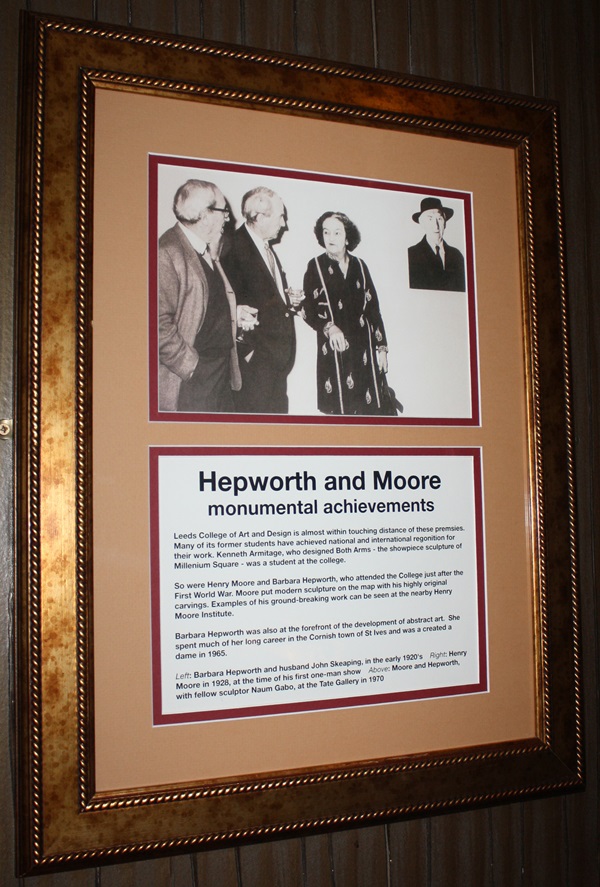
The text reads: Leeds College of Art and Design is almost within touching distance of these premises. Many of its former students have achieved national and international recognition for their work. Kenneth Armitage, who designed Both Arms – the showpiece sculpture of Millennium Square – was a student at the college.
So were Henry Moore and Barbara Hepworth, who attended the College just after the First World War. Moore put modern sculpture on the map with his highly original carvings. Examples of his ground-breaking work can be seen at the nearby Henry Moore Institute.
Barbara Hepworth was also at the forefront of the development of abstract art. She spent much of her long career in the Cornish town of St Ives and was created a dame in 1965.
Left: Barbara Hepworth and husband John Skeaping, in the early 1920’s
Right: Henry Moore in 1928, at the time of his first one-man show
Above: Moore and Hepworth, with fellow sculptor Naum Gabo, at the Tate Gallery in 1970
Framed photograph and text about universities in Leeds.
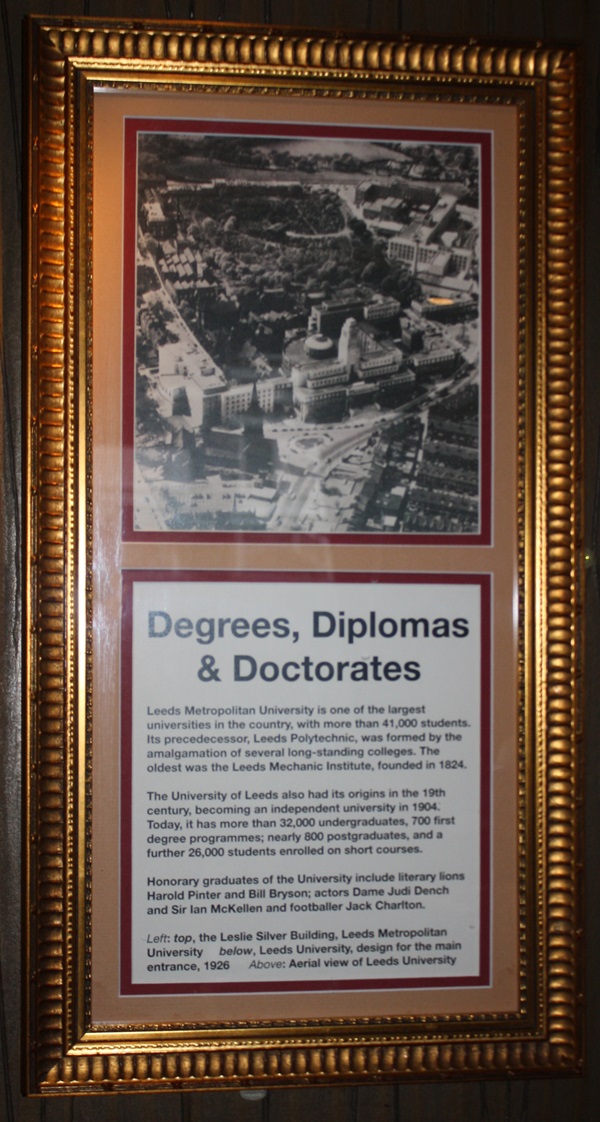
The text reads: Leeds Metropolitan University is one of the largest universities in the country, with more than 41,000 students. Its predecessor, Leeds Polytechnic, was formed by the amalgamation of several long-standing colleges. The oldest was the Leeds Mechanic Institute, founded in 1824.
The University of Leeds also had its origins in the 19th Century, becoming an independent university in 1904. Today, it has more than 32,000 undergraduates, 700 first degree programmes; nearly 800 postgraduates, and a further 26,000 students enrolled on short courses.
Honorary graduates of the university include literary lions Harold Pinter and Bill Bryson; actors Dame Judi Dench and Sir Ian McKellen and footballer Jack Charlton.
Left: top, the Leslie Silver Building, Leeds Metropolitan University, below, Leeds University, design for the main entrance, 1926
Above: Aerial view of Leeds University
A framed painting by Atkinson Grimshaw and text about Park Row.
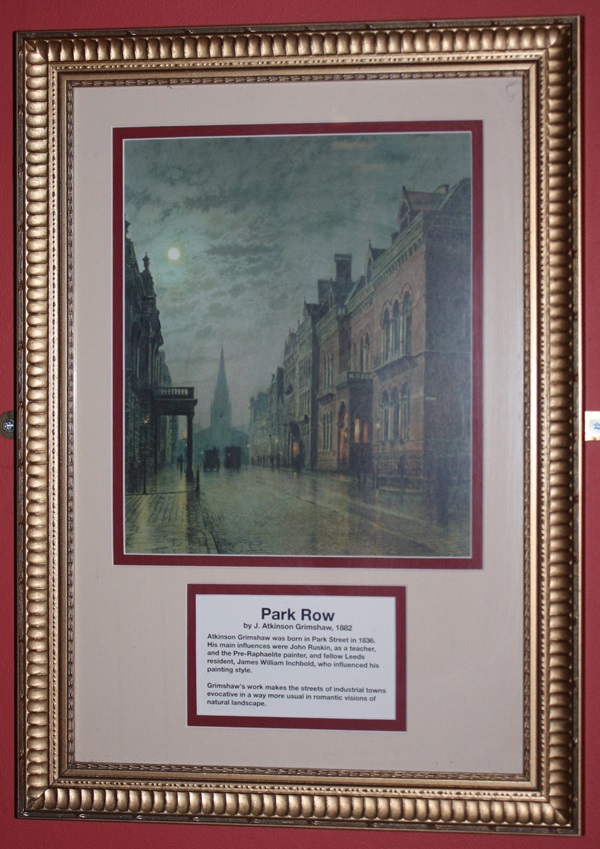
The text reads: Atkinson Grimshaw was born in Park Street in 1836. His main influences were John Ruskin, as a teacher, and the Pre-Raphaelite painter, and fellow Leeds resident, James William Inchbold, who influenced his painting style.
Grimshaw’s work makes the streets of industrial towns evocative in a way more usual in romantic visions of natural landscape.
Framed photograph of poverty in Leeds, c1870.
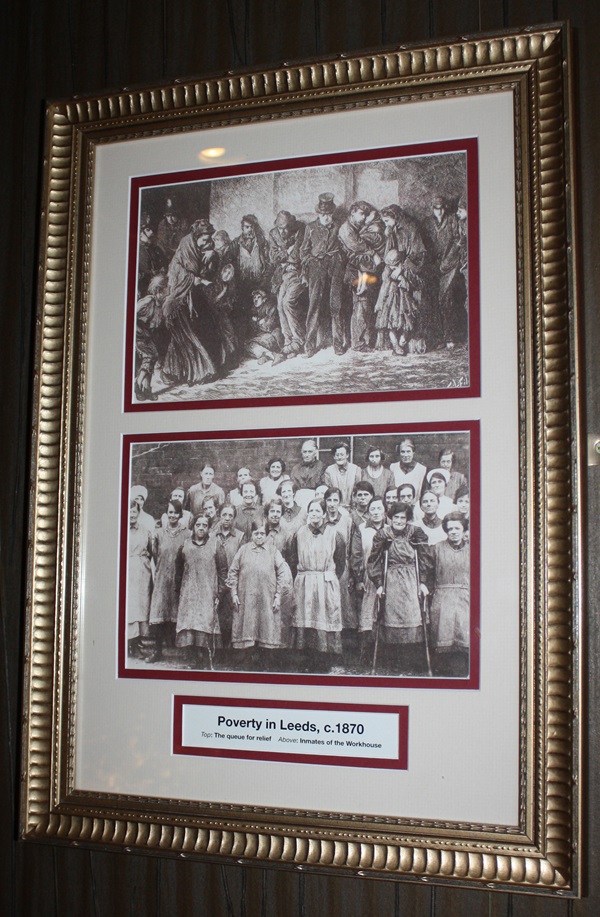
Top: The queue for relief
Above: Inmates of the Workhouse
Framed photographs of Leeds in 1900.
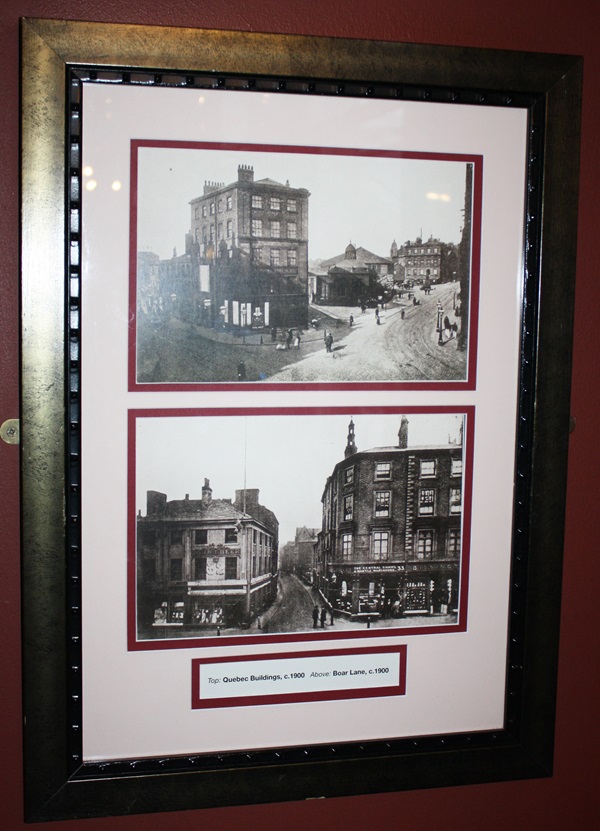
Top: Quebec Buildings, c.1900
Above: Boar Lane, c.1900
Framed drawings of buildings in Leeds.
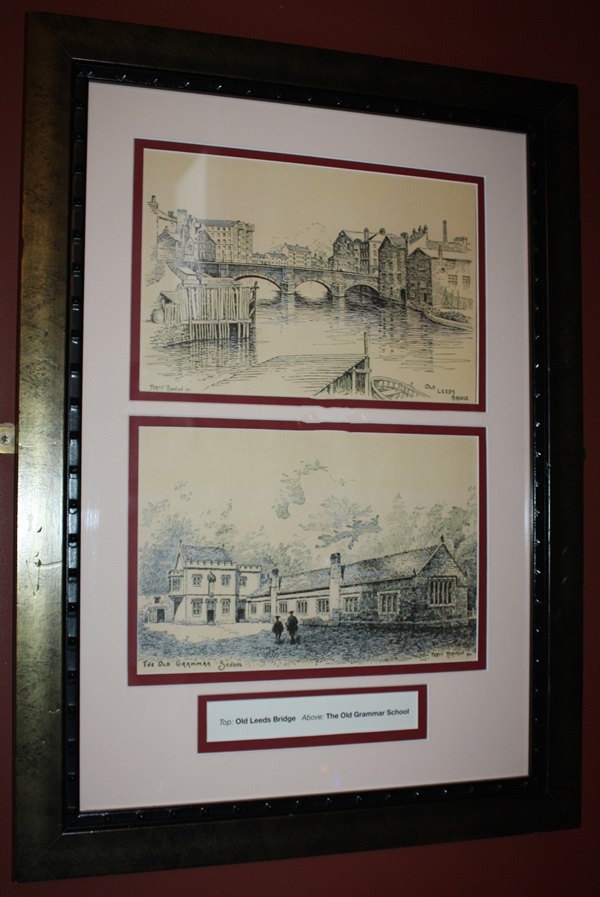
Top: Old Leeds Bridge
Above: The Old Grammar School
Framed drawings of Briggate.
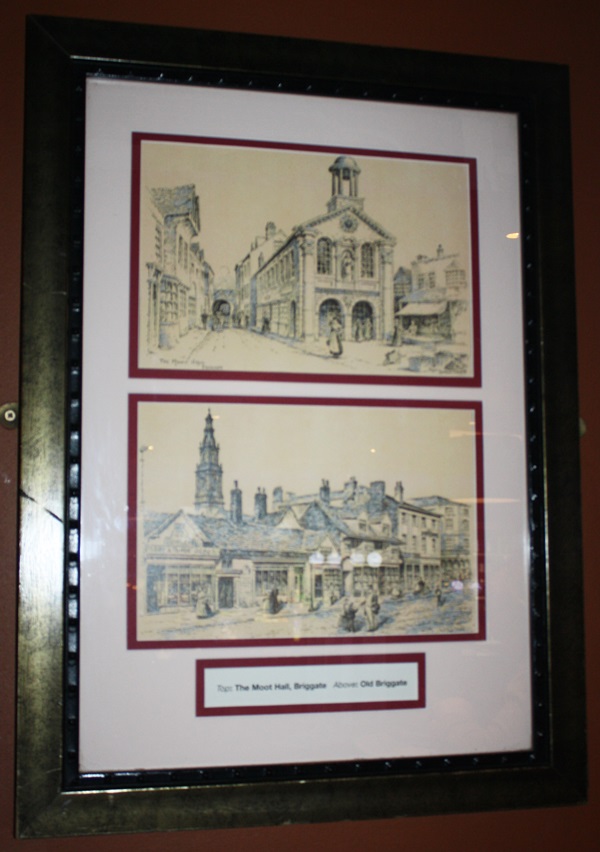
Top: The Moot Hall, Briggate
Above: Old Briggate
A framed photograph of Leeds town hall and civic hall, from the air.
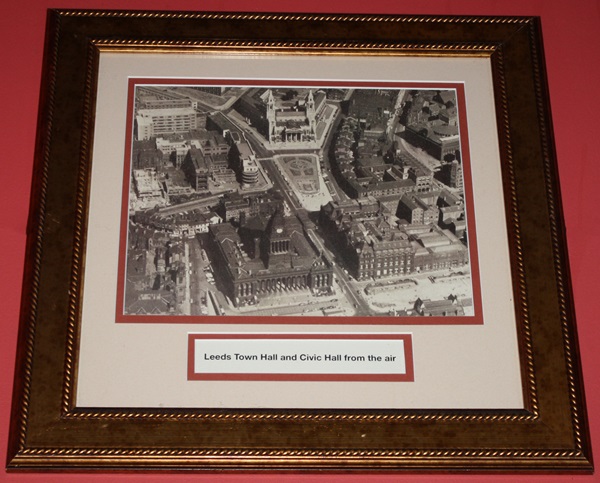
A framed photograph of the interior of Cuthbert Brodrick’s Corn Exchange.
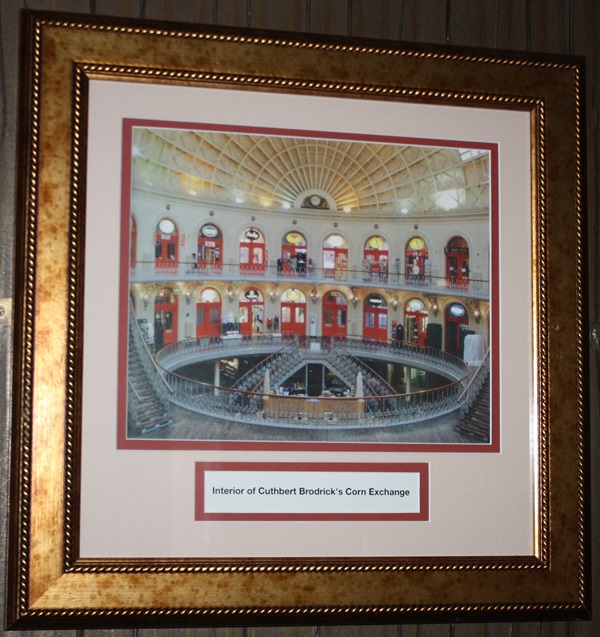
External photograph of the building – main entrance.
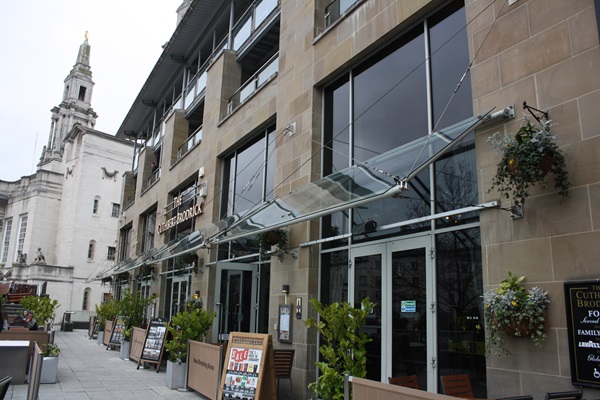
If you have information on the history of this pub, then we’d like you to share it with us. Please e-mail all information to: pubhistories@jdwetherspoon.co.uk